Vegan Globetrotter is supported by our audience. When you purchase through one of our links, we may earn a small affiliate commission. As an Amazon Associate I earn from qualifying purchases. Your cost is not affected.
==================
Alright, let’s delve into the world of caring for your knife. Paying attention to the Care of Your Knife is crucial. It’s not just about keeping them shiny and sharp, although that’s part of it. It’s also about prolonging their lifespan and ensuring they perform their best when you need them most.
Think about it this way: You wouldn’t neglect your car if you wanted it to run smoothly. Well, the same principle applies to your kitchen tools, especially when it comes to caring for your knife. A well-maintained knife isn’t just a tool; it’s an investment in your culinary adventures.
So, whether you’re a seasoned chef or just someone who likes to whip up a meal now and then, proper knife care is key. Stick around, and I’ll walk you through some simple yet effective ways to keep those blades in tip-top shape. Trust me, your future self—and your future meals—will thank you for it.
Key Highlights
- Knife care matters because of safety, performance, longevity, and hygiene.
- The Consequences of Neglecting Knife Care include dullness, rust and corrosion buildup, potential handle damage, and shortened lifespan.
- Choosing the Right Cutting Board: Opt for wooden or plastic boards to prevent blade damage.
- Keeping Your Blade Clean After Use: Wipe with a kitchen towel after slicing acidic foods.
- Washing Your Knife with Soapy Water: Wash by hand using gentle soap and lukewarm water to avoid corrosion.
- Drying Completely: Dry knives immediately after washing to prevent rust and germ buildup.
- Regular sharpening is crucial for maintaining the knife edge in top shape.
- Use knife blocks, magnetic strips, or in-drawer sheaths to prevent damage, and avoid storing knives loose in a drawer to prevent dullness and damage.

Knife Care 101: Keeping Your Kitchen Blades Sharp and Shiny

Photo by: flamesmedia.ca
It’s lunchtime for the kids, but hold on a second – your go-to sharp knife looks a bit worse for wear. It’s lost its edge, and there’s a hint of rust creeping in. Slicing through those fruits and veggies is going to be a struggle. Don’t panic! Taking care of your sharp knives is way easier than you might imagine!
Looking after your kitchen knives isn’t just about making them last longer and maintaining their value—it’s also about keeping things safe. A well-kept sharp knife – with a clean, sharp edge and a comfy, secure handle – is safer to use and helps you breeze through chopping tasks much quicker than a dull, beat-up blade. Plus, if you’ve invested in quality kitchen knives, you want them to stick around for years, maybe even decades, right? So, let’s dive into some simple ways to keep those sharp knives in tip-top shape.
Why Knife Care Matters: Ensuring Sharpness, Safety, and Longevity
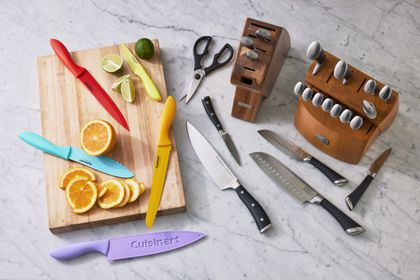
Photo by: The Spruce Eats
Let’s dive into why caring for your kitchen knife matters:
- Safety: Imagine using a dull knife on a cutting board and exerting extra force to get through your ingredients. It’s a recipe for disaster, with slips and cuts waiting to happen. Keeping your kitchen knife sharp reduces the risk of accidents, ensuring safer food prep.
- Performance: Using a dull knife on a cutting board can transform an easy task into a bothersome challenge. But with proper care of your knife, you ensure excellent performance every time. Sharp knives slice effortlessly, providing clean and precise cuts for a more enjoyable cooking experience.
- Longevity: Your kitchen knife is an investment; with proper care, it can last a lifetime. Regular maintenance, including cleaning and sharpening, prolongs its lifespan, saving you money in the long run.
- Hygiene: Neglecting the care of your knife can lead to food particles and bacteria buildup. Ensuring your knife is clean and dry after every use helps uphold a sanitary kitchen environment.
In essence, caring for your knife goes beyond ensuring its sharpness—it’s about safety, performance, longevity, and maintaining a clean cooking space. So remember, a little attention to the care of your knife goes a long way in enhancing your culinary adventures.

What Happens When You Neglect Knife Care: The Consequences of Neglecting Your Blades
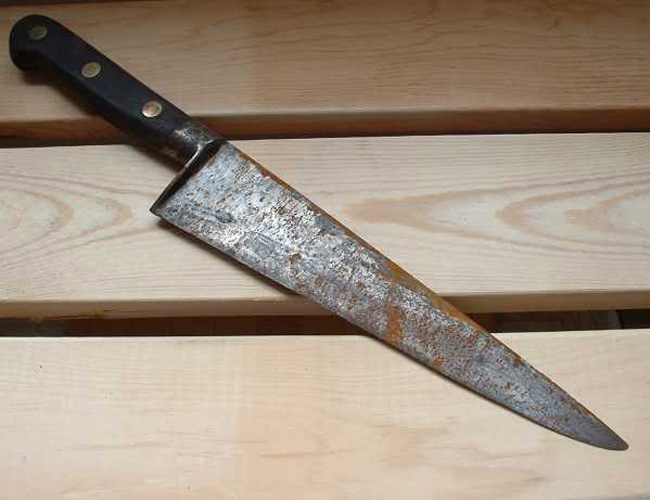
Photo by: The Cutting Edge
If you neglect the care of your knife, here’s what it might face:
- Dullness: This is the most common consequence. Without sharpening, the knife blade gradually loses its edge, making it harder to cut and requiring more force. This can be frustrating and increase the risk of accidents.
- Rust and Corrosion: For knives that aren’t stainless steel, moisture, and food acids can cause rust and corrosion, damaging the knife blade’s surface. This not only makes the knife look unsightly but can also affect its performance.
- Damage to the Handle: Improper cleaning or storage can damage the handle. For instance, leaving a knife with a wooden handle soaking in water can cause it to warp or crack. Harsh dishwashers can also wear down the handle material.
- Shortened Lifespan: Neglecting your knife’s sharp care will shorten its lifespan. The constant strain of using a dull blade can stress the metal and rust or a damaged handle can render the knife unusable. So, it’s essential to prioritize the care of your knife to keep it performing at its best.
Nurturing Your Blades: Essential Kitchen Knife Care Tips
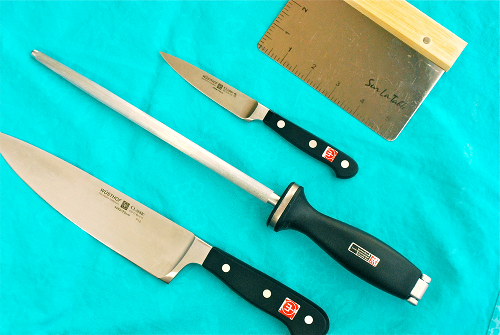
Photo by: A Sweet Pea Chef
Now that you’ve seen what happens if you neglect your kitchen knife care, we want to avoid that. Here’s how to take care of your knife:
Choosing the Right Cutting Board
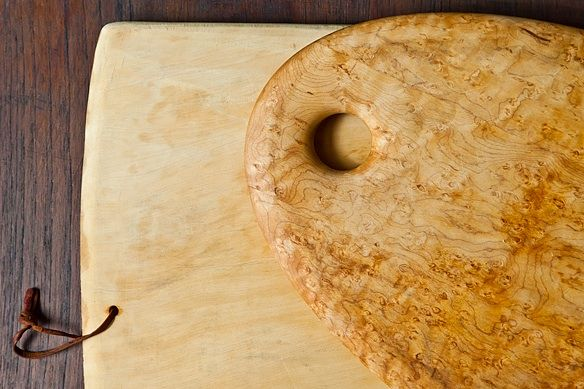
Photo by: Food52
Let’s talk cutting boards! You might have heard about using fancy glass cutting boards or even marble ones, but hold up – they’re not always the best choice for your knife. Surprising, right? These hard surfaces can mess with your knife’s blade over time.
Instead, go for wooden or plastic boards. They’re much gentler on your knife blades. So, stick to the right cutting boards to keep that blade sharp and ready for action.
Always Keep Your Blade Clean After Use
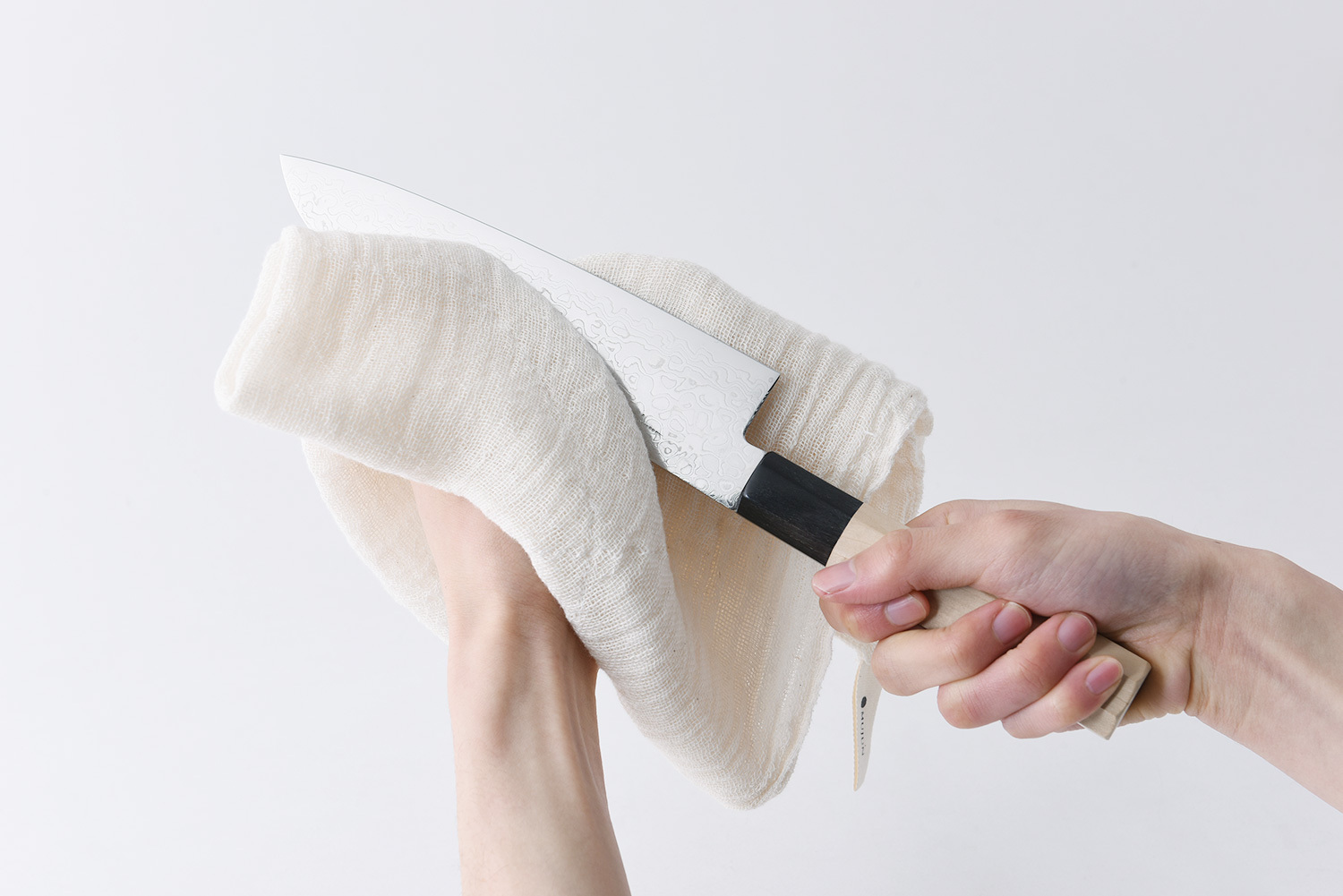
Photo by: MUJUN
Let’s discuss how acidic foods like lemons, tomatoes, and onions can affect your knife. These foods can erode the blade over time. That’s why it’s smart to clean your knife well after slicing anything acidic, especially if you use a high-carbon steel knife.
Now, most modern kitchen knives, including others, are made of stainless steel, with certain alloys to prevent rust. But here’s the kicker: neglecting your knife can still lead to those pesky rust patterns, especially around the cutting edge where the stainless steel might have worn down.
Here’s a little tip: Keeping your knife clean is a good idea while you’re busy cooking up a storm. Just give it a quick wipe with a kitchen towel after each use to clear away any lingering food particles and maintain its cutting edge. Your knives will thank you for it!
Washing Your Knife with Soapy Water for Optimal Care
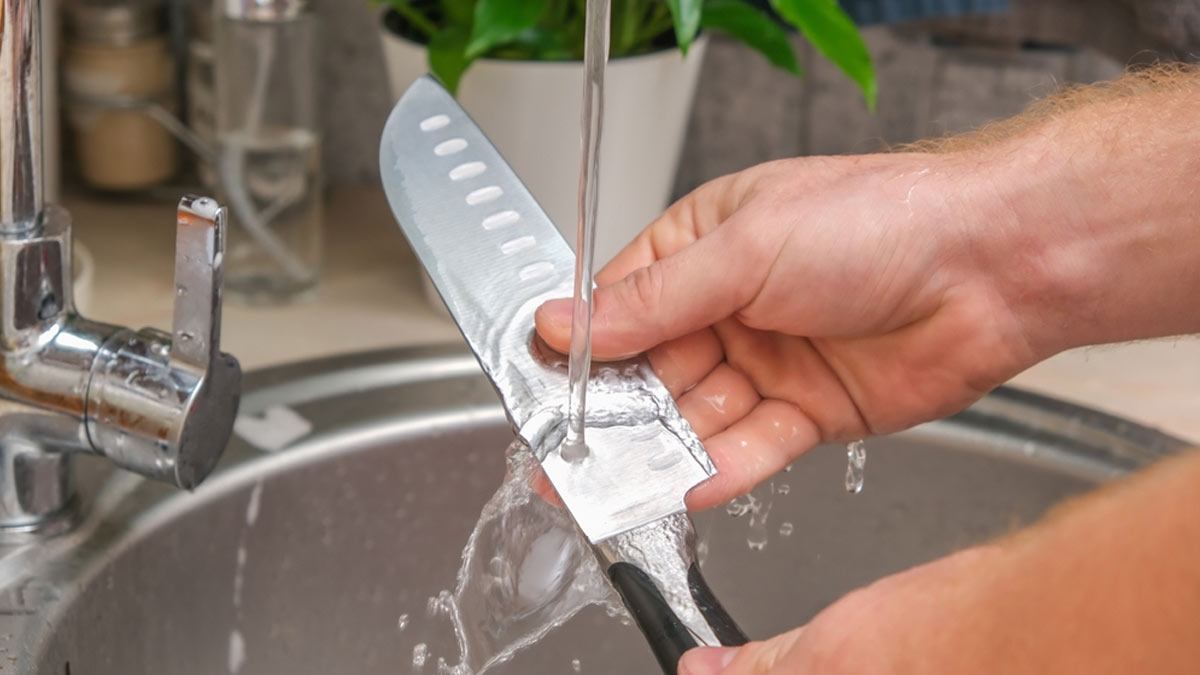
Photo by: HerZindagi
Alright, let’s talk about how to keep your knife spick and span. Use some mild dish soap and hot water to wash and clean it. It’s a good habit to wash it right after you’ve finished using it to prevent corrosion and keep things hygienic. Oh, and here’s a little tip: avoid soaking your knife. That can make the handle waterlogged, a perfect setup for bacteria to party.
Cleaning your knives is key to making them last longer and keeping yourself safe from accidents. So, give them a hand wash with warm water and dish soap to keep them in tip-top shape. Remember to dry them completely afterward, along with any other kitchen utensils you’ve used.
Dry Completely

Photo by: TipHero
Here’s the deal: don’t let your good knives air dry after washing them. That’s a one-way ticket to Rust City or a germ party. Instead, grab a paper towel or a hand towel and give them a good wipe-down as soon as you’re done washing. Taking care of your knife with a little drying action right after washing is part of the Care of Your Knife routine.
Now, if you’re in a pinch and don’t have a hand towel handy, a paper towel works fine. It might seem like a small detail, but trust me, these little things make a big difference in keeping your knives in tip-top shape.
And hey, here’s a bonus tip: after drying your knives, you can give them a little oiling session. Just grab any neutral oil and a paper towel. But here’s the crucial part: be super careful around the blade edge – no fingers near there! Work that oil into the blade, always moving towards the edge. If you’re worried about accidental slips, pop those knives on a flat surface while you polish away. Safety first, folks!
Mastering the Edge: Sharpening and Honing Your Knife Skills
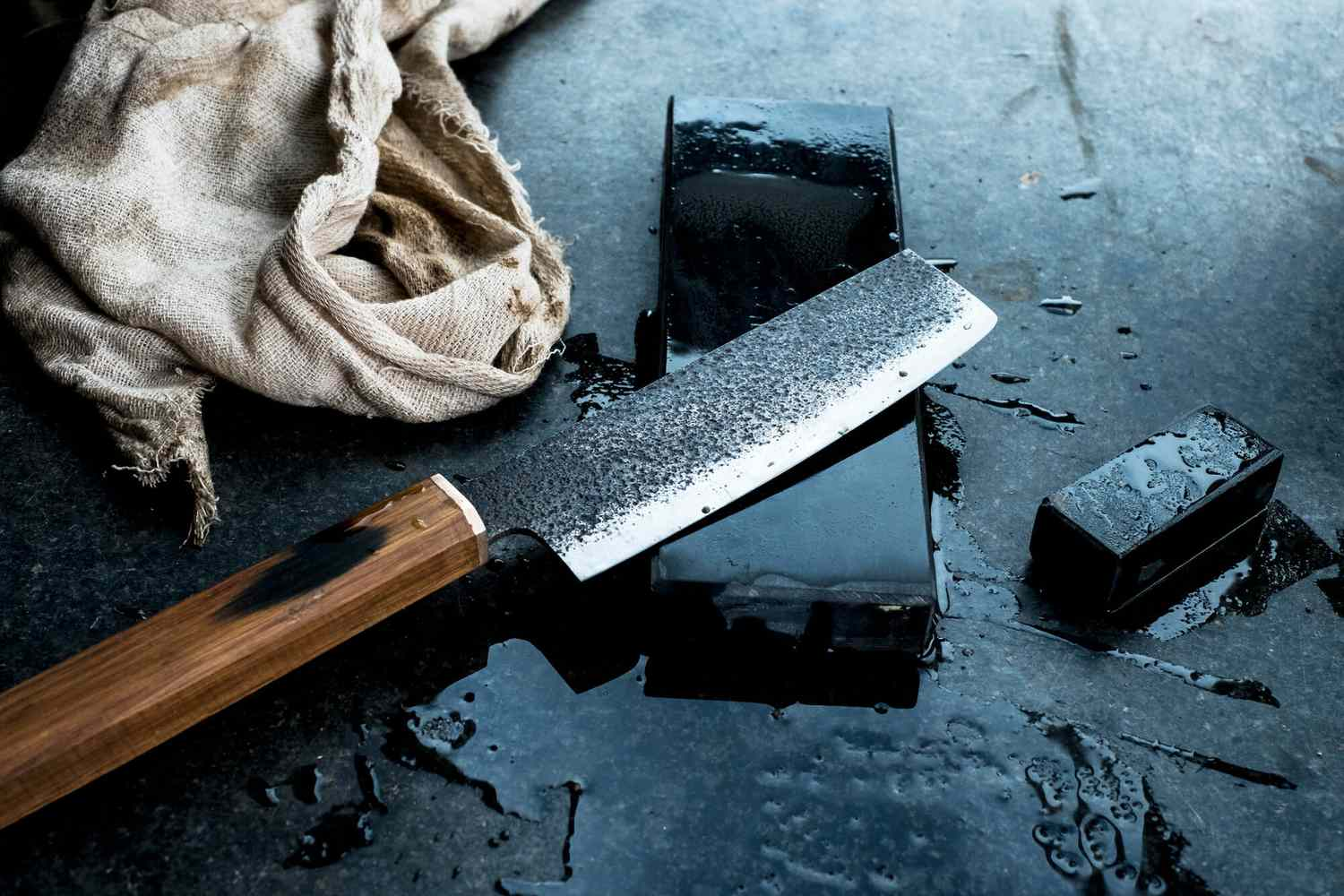
Photo by: Southern Living
Let’s break it down. It’s a good idea to give your knife a professional tune-up each year or whenever it starts to feel dull. Regular sharpening is key to keeping that knife edge in top shape.
When it comes to knife sharpening, you’ve got a few options. Whetstones and sharpening stones are classic choices for getting that blade nice and sharp. And if you’re looking for convenience, you can always opt for an electric sharpener. Or, if you prefer, you can leave it to the pros and take your knife to a professional sharpener.
Now, let’s talk about the honing rod. It’s handy for keeping your knife’s edge aligned between sharpenings. A honing rod can be a lifesaver, especially if you have a knife with very hard steel, like those Japanese-style blades.
Here’s the deal: a dull knife is like a ticking time bomb in the kitchen. When you apply more pressure, you increase the chances of a slip or a cut.
Here’s a video about honing and sharpening.
By: Knife Aid
Knife Storage for Longevity and Safety
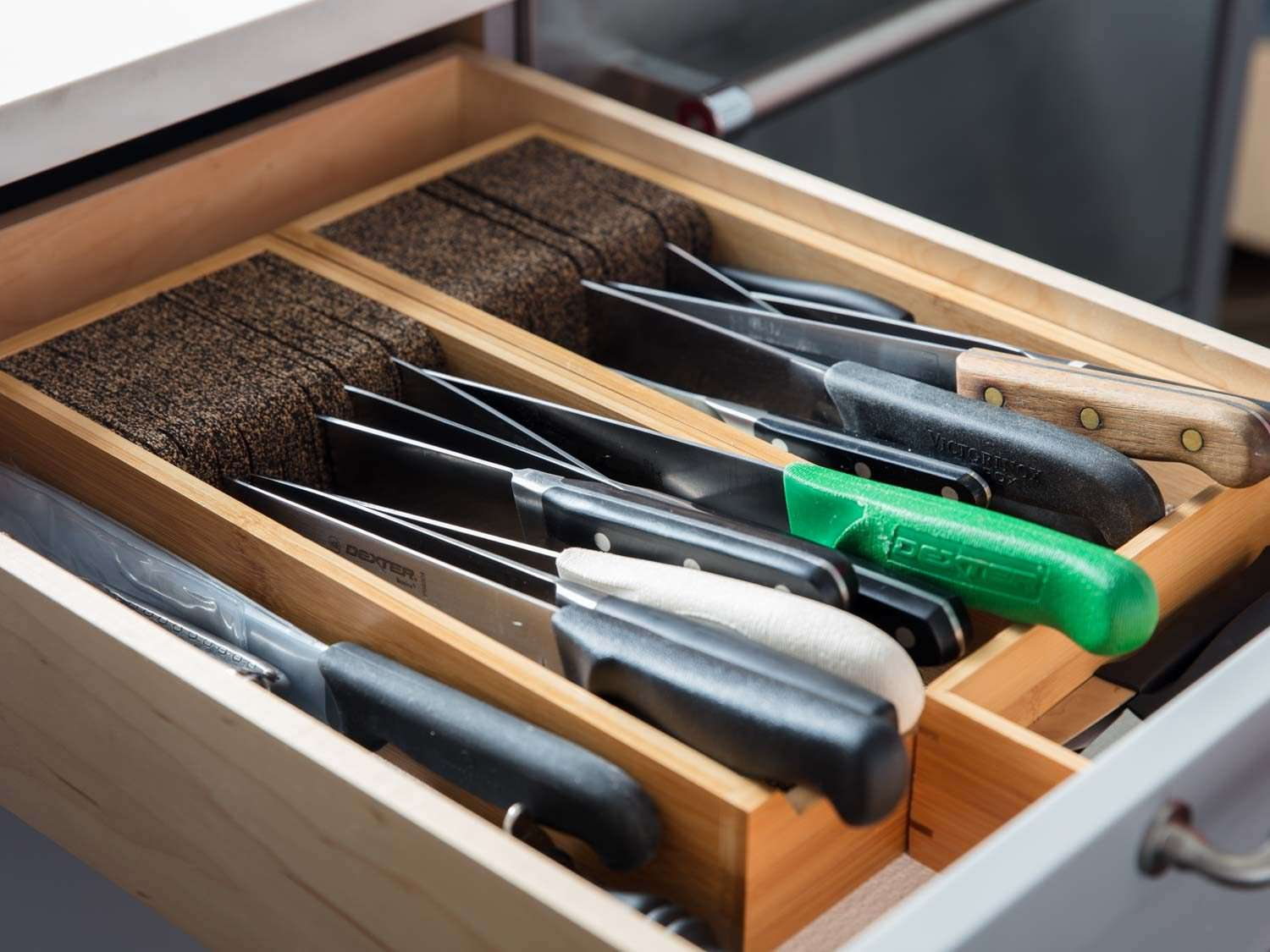
Photo by: Serious Eats
Alright, let’s discuss proper knife storage as part of your Care of Your Knife routine. Keeping your knives safely stored is crucial to prevent damage or injury, especially around other utensils.
You have a few good options for storing knives: knife blocks, magnetic strips, or in-drawer sheaths. These all work well and keep your knives neatly organized and easily accessible without risking accidental nicks or cuts.
Here’s the thing to avoid: tossing your knives loose in a drawer along with other utensils. When they’re jostling around in there, it’s a recipe for disaster – they can bang into each other and end up dull or damaged. With the right storage, your knives will stay sharp and ready for action whenever needed.
Here’s a video about knife care basics.
By: Cutlery and More

Knife Care Mastery: Ensuring Longevity and Safety in the Kitchen
As we wrap up, let me emphasize how crucial it is to master the art of knife care to ensure longevity and safety in your kitchen. By following those essential maintenance tips, you will have taken excellent care of your knife, keeping it in tip-top condition for years.

Remember, your knife wasn’t just a tool but an investment in your culinary adventures. From selecting the right cutting board to keeping your blade clean and properly dried after each use, every step played a vital role in the Care of Your Knife, maintaining its performance and lifespan.
Regular sharpening and honing were also key aspects of knife care. Whether you preferred whetstones, sharpening stones, or an electric sharpener, keeping your knife’s edge sharp was essential for safer and more efficient cutting.
Pay attention to proper knife storage, whether a knife block, magnetic strip, or in-drawer sheath; the right storage method keeps your knives organized and protected from damage. Integrating these maintenance tips into your kitchen routine ensured that your knives remained sharp, shiny, and ready for action whenever needed.

So, taking care of your knives meant they cared for you in all your culinary endeavors. If you want quality kitchen tools, check out VeganGlobetrotter for sustainable and eco-friendly products to accompany you on your cooking journey.
FAQs

Is Vinegar an Effective Cleaner for Knives?
When cleaning knives, vinegar can be a mixed bag. Here’s what you need to know:
Vinegar works wonders for tackling light rust spots. Soak the blade for about 5 minutes, then gently scrub away the rust.
However, for regular cleaning, there are better choices than vinegar. Its acidity can dull the blade and harm certain finishes over time. For routine cleaning, utilize warm, soapy water and a gentle sponge to maintain the quality of your knives.
How Frequently Should You Apply Oil to Your Knife?
How often you need to oil your knife depends on its rust potential:
For knives prone to rust, like those made of high-carbon steel, it’s best to oil them every 2-3 times a month, especially if they’re used near water or kept in a humid environment.
For stainless steel knives, which are more resistant to rust, you can oil them every few months or even less frequently if they’re rarely used and stored in a dry place.
The key here is to oil more often for knives that see frequent use, are prone to rust, or are kept in humid conditions. Remember, a thin layer of oil is all you need – too much can attract dirt and grime.
How Can I Improve My Knife Skills?
Are you looking to become a knife pro? Here’s the quick route:
A sharp knife equals safe and effortless cuts: Invest in a sharpener or opt for professional sharpening services.
- Grip It Right: Master the pinch grip—place your thumb and pointer finger near the blade for better control.
- Slice Like a Chef: Start with basic cuts such as chopping onions. You can find online tutorials for slicing, dicing, and mincing.
- Practice, Practice, Practice: Take it slow and focus on smooth, controlled movements. Remember, safety comes first—keep your fingers curled inwards on your other hand.
The more you practice the correct technique, the more confident you’ll feel in the kitchen!





Don't miss out
when new recipes and information are added!
Join our newsletter for free recipes,
healthy living inspiration, and special offers
You have Successfully Subscribed!